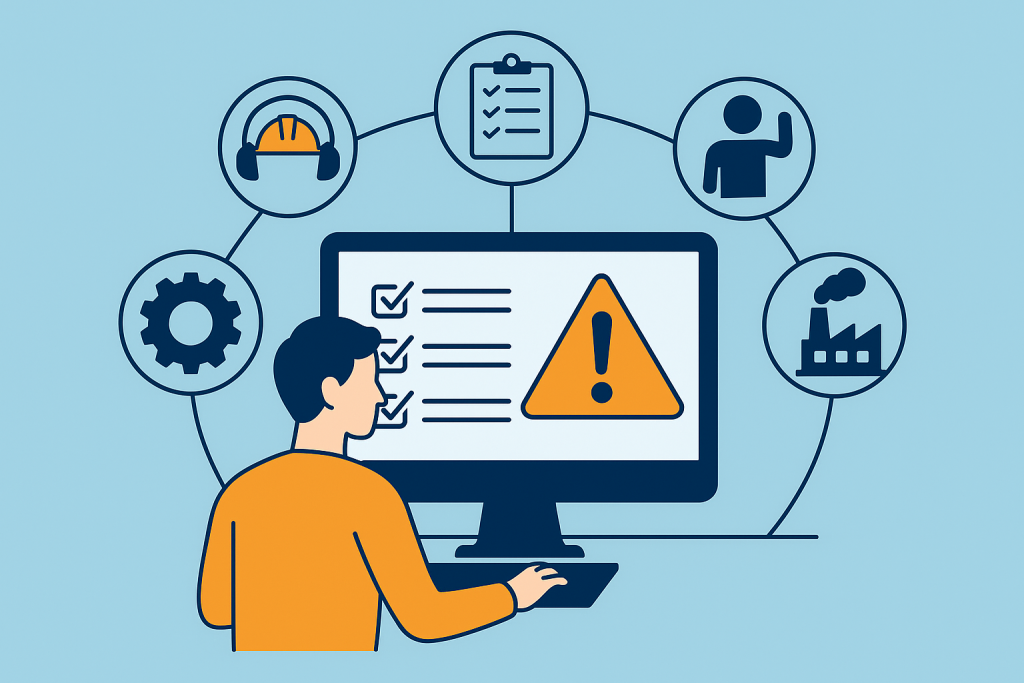Why Understanding Hazards Is the First Step to Prevention #
No matter the industry, workplace hazards exist — and failing to identify and address them can lead to injuries, costly downtime, and compliance issues. While each sector has its unique risks, there are common hazards that appear across most workplaces.
Understanding these hazards helps organizations take proactive measures to keep employees safe and productive.

1. Slips, Trips, and Falls #
Wet floors, uneven surfaces, and poor lighting are common culprits.
Prevention: Keep walkways clear, install non-slip flooring, and ensure proper lighting.
2. Ergonomic Hazards #
Poor workstation design leads to repetitive strain injuries.
Prevention: Provide adjustable chairs, monitor stands, and encourage micro-breaks.
3. Chemical Hazards #
Exposure to harmful substances can happen via inhalation, skin contact, or ingestion.
Prevention: Use proper storage, ventilation, and PPE (personal protective equipment).
4. Electrical Hazards #
Faulty wiring, overloaded circuits, or improper lockout/tagout practices.
Prevention: Regular inspections and proper training in electrical safety.
5. Machinery Hazards #
Moving parts can cause severe injuries if unguarded.
Prevention: Install machine guards and enforce lockout/tagout procedures.
6. Fire Hazards #
Flammable materials, faulty wiring, and blocked exits increase risk.
Prevention: Fire drills, accessible extinguishers, and hazard-specific training.
7. Noise Hazards #
Long-term exposure leads to hearing loss.
Prevention: Hearing protection and noise-level monitoring.
8. Biological Hazards #
Bacteria, viruses, and mold affect workers in healthcare, food, and agriculture.
Prevention: Sanitation protocols, PPE, and vaccination programs.
9. Confined Spaces #
Poor ventilation and restricted movement pose unique risks.
Prevention: Proper training, monitoring, and ventilation equipment.
10. Stress and Fatigue #
Often overlooked, these contribute to accidents and poor decision-making.
Prevention: Manage workloads, encourage breaks, and support mental health initiatives.
Identifying and addressing hazards is the foundation of a strong safety program. With the right EHS systems, hazard monitoring can be proactive rather than reactive.
Related Articles #
- Workplace Safety Compliance Made Simple
- Learn what workplace safety compliance means under OSHA, CSA, and ISO standards, and how to maintain compliance effortlessly.
#WorkplaceSafety #EHS #HazardPrevention #SafetyManagement #SafetyFirst #HealthAndSafety




